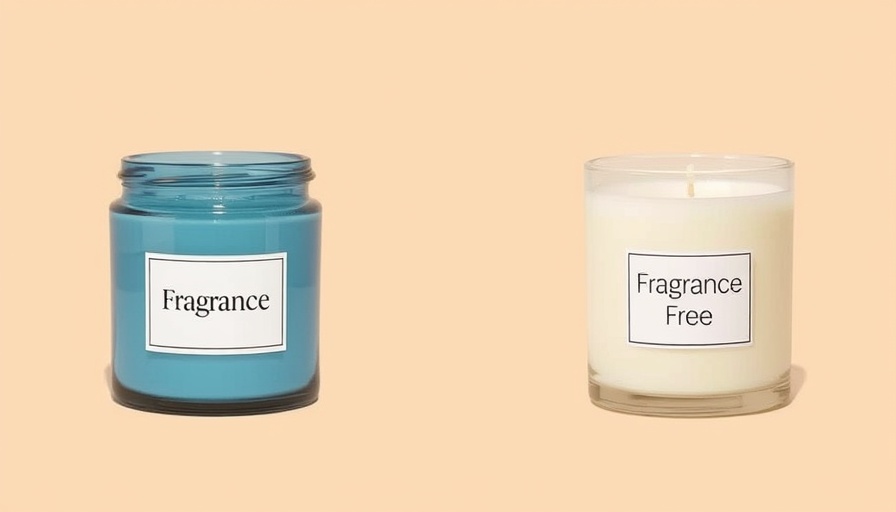
7 Toxic Cleaning Products You Should Ditch Today
As homeowners in Folsom and El Dorado Hills gearing up for spring cleaning, it’s crucial to be aware of the hidden dangers lurking in your cleaning cupboard. While many of us embrace DIY projects with gusto, inadvertently using harmful chemicals can compromise our health. Here, we shed light on seven toxic cleaning products you should avoid and suggest safer, eco-friendly alternatives that keep your home clean without jeopardizing your well-being.
Understanding the Risks of Traditional Cleaning Products
According to the American Association of Poison Control Centers, cleaning products account for a significant percentage of household poisonings. Many conventional cleaning supplies contain volatile organic compounds (VOCs), which can contribute to respiratory issues, skin irritation, and long-term health problems. The frequent use of these products can also pollute our indoor air, leaving us vulnerable to adverse effects. By identifying the risks associated with these cleaners, you’re taking an essential step toward a healthier living environment.
1. Bleach: The Strongest Option is Also the Most Toxic
Bleach is one of the most commonly used cleaning agents, yet it's highly toxic and corrosive. It can release harmful fumes that irritate the respiratory system. Instead, consider using hydrogen peroxide or vinegar mixed with water to disinfect surfaces safely without harsh chemicals.
2. Ammonia: A Potent but Hazardous Cleaner
Many window-cleaning products and floor cleaners contain ammonia, which can burn the skin and harm the eyes. Moreover, mixing ammonia with bleach produces toxic chloramine vapors. A safer option includes using a solution of water with dish soap. It's just as effective and much gentler on both you and your surfaces.
3. Phthalates: Hidden Hazards in Fragrance
Many scented cleaning products contain phthalates, which are chemicals that create the 'fresh' smell and are linked to hormone disruption. Opt for fragrance-free or natural essential oils infused cleaners to maintain a fresh scent without the endocrine-disrupting chemicals.
4. Sodium Hydroxide: Caustic Yet Common
This ingredient is often found in drain cleaners and oven cleaners. It's corrosive and can lead to severe skin and eye damage. A safer alternative is to use baking soda and vinegar—a natural and effective combination for unclogging drains and scrubbing ovens.
5. Quaternary Ammonium Compounds: More Harm than Good?
These compounds are prevalent in disinfecting wipes and sprays. While they’re effective at killing germs, they can lead to respiratory issues and promote antibiotic-resistant bacteria. Instead, natural disinfectants like a solution combining vinegar with water can effectively kill germs without harmful side effects.
6. Sulfates: Foam without the Benefits
Commonly found in surface cleaners and dish soapers, sulfates can strip the skin of natural oils and trigger allergic reactions. Choose sulfate-free cleaning options or create your own using gentle soaps mixed with baking soda for a non-toxic solution that still provides a good scrub.
7. Conventional Floor Cleaners: Toxic Cocktail for Your Feet
Many store-bought floor cleaners can leave behind residues harmful to pets and children. Substitute these with a mixture of hot water and vinegar for a safe, effective cleaning method that won’t harm your family or the environment.
DIY Alternatives: Embrace Eco-Friendly Cleaning Solutions
One of the joys of DIY is that you can craft your cleaning products using inexpensive and non-toxic materials. Combining baking soda, vinegar, and essential oils not only provides a superior clean but also creates a pleasant aroma throughout your home. Plus, it's an excellent way to cut costs and reduce plastic waste!
The Benefits of Going Green in Your Cleaning Routine
Switching to non-toxic cleaning products benefits your health and the environment. Eco-friendly products minimize your carbon footprint and support sustainability. They are often cheaper and just as effective in keeping your home pristine.
Embracing a Cleaner Future
In your commitment to a cleaner, healthier home, consider eliminating the use of toxic products in favor of eco-friendly alternatives. As you engage in your DIY projects, remember that creating a safe environment for you and your loved ones takes precedence. By sharing these alternatives, you'll inspire a collective effort toward greener cleaning habits in the Folsom and El Dorado Hills communities.
For homeowners keen on creating a safer environment while maintaining cleanliness, it's essential to reflect on the cleaning products you use. Avoiding these toxic substances and adopting natural alternatives empowers you to create a sanctuary that resonates with sustainability and health. Remember, a clean home should nourish both your space and your health.
 Add Row
Add Row  Add
Add 




Write A Comment